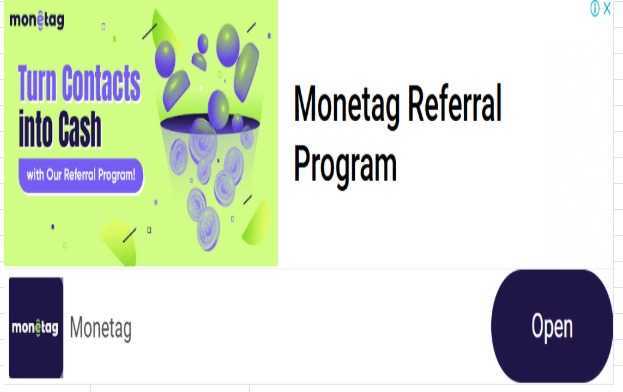Understanding the Stakeholder Performance Domain in Project Management
In the dynamic world of project management, success hinges not only on delivering the project on time, within scope, and on budget—but also on how well you manage and engage your stakeholders. The Stakeholder Performance Domain, as outlined in the PMI’s PMBOK® Guide – Seventh Edition, emphasizes the importance of stakeholder engagement throughout the project lifecycle.
This blog will explore the Stakeholder Performance Domain in depth, examining what it means, why it’s important, and how to effectively apply it in real-world project management scenarios. Whether you’re a budding project manager or a seasoned professional, understanding this domain is crucial to the health and success of your projects.
What is the Stakeholder Performance Domain?
The Stakeholder Performance Domain is one of the eight performance domains introduced in the PMBOK® Guide – Seventh Edition. It refers to the activities and functions associated with identifying, understanding, engaging, and managing stakeholders to achieve project success.
Definition
“The Stakeholder Performance Domain addresses activities and functions associated with stakeholders. It focuses on maintaining effective relationships and collaboration with all stakeholders to deliver value and project outcomes.” – PMBOK® Guide
Who Are Stakeholders?
A stakeholder is any individual, group, or organization that can affect, be affected by, or perceive themselves to be affected by a decision, activity, or outcome of a project.
Types of Stakeholders
- Internal Stakeholders
- Project Team
- Executives and Senior Management
- Business Units
- Functional Managers
- External Stakeholders
- Customers or Clients
- Suppliers and Vendors
- Regulators and Government Agencies
- Community or Public
Each stakeholder has different expectations, interests, and influence on the project. Recognizing these differences and managing them accordingly is key to successful stakeholder engagement.
Importance of Stakeholder Engagement
Effective stakeholder engagement is not just a good practice—it’s a critical success factor. Research shows that poor stakeholder engagement is a leading cause of project failure.
Why Is It Important?
- Alignment of Expectations: Avoids misunderstandings and mismatched goals.
- Improved Decision-Making: Stakeholders offer valuable insights that can shape better strategies.
- Increased Support and Buy-In: Engaged stakeholders are more likely to support the project, allocate resources, and help resolve issues.
- Reduced Risks: Understanding stakeholder concerns early helps in identifying and mitigating risks.
Key Elements of the Stakeholder Performance Domain
- Stakeholder Identification
- Stakeholder Analysis
- Stakeholder Engagement Planning
- Communication and Collaboration
- Monitoring Stakeholder Engagement
- Adjusting Strategies as Needed
- Stakeholder Identification
Identifying all relevant stakeholders at the start of the project is the first and most important step. This includes obvious and less-obvious parties who may influence or be influenced by the project.
Tool: Stakeholder Register
The register should include:
- Name and role
- Interests and expectations
- Influence and impact
- Communication preferences
- Stakeholder Analysis
Once identified, stakeholders need to be analyzed based on their:
- Power
- Interest
- Influence
- Attitude
- Support level
Tools:
- Power/Interest Grid
- Influence/Impact Matrix
- Salience Model
This analysis helps project managers prioritize stakeholders and determine the appropriate level of engagement for each.
- Stakeholder Engagement Planning
The engagement plan outlines how to involve stakeholders throughout the project. It defines communication strategies, engagement activities, frequency of interaction, and feedback mechanisms.
Key Components:
- Stakeholder priorities
- Engagement level (Unaware, Resistant, Neutral, Supportive, Leading)
- Communication channels
- Reporting frequency
- Communication and Collaboration
Transparent, timely, and tailored communication is the backbone of stakeholder management.
Best Practices:
- Use the right channels (email, meetings, dashboards)
- Adjust messages based on stakeholder preferences
- Use visuals and storytelling to enhance understanding
- Monitoring Stakeholder Engagement
Regular monitoring ensures stakeholders remain informed, engaged, and aligned with project goals. This includes gathering feedback and addressing issues promptly.
Techniques:
- Surveys and polls
- One-on-one check-ins
- Stakeholder satisfaction metrics
- Adjusting Engagement Strategies
Stakeholders are not static. Their roles, influence, and interest can shift. It’s important to revisit and adjust the engagement strategies as needed.
Tools and Techniques for Stakeholder Engagement
- Stakeholder Register
- RACI Matrix
- Stakeholder Engagement Assessment Matrix
- Communication Plan
- Surveys and Feedback Tools
- Facilitated Workshops
- JAD (Joint Application Development) Sessions
- Influence Diagrams
- Empathy Maps
- Social Network Analysis
Best Practices for Stakeholder Management
- Start Early: Engage stakeholders from the initiation phase.
- Be Proactive: Anticipate stakeholder needs and issues.
- Tailor Communication: Customize interactions based on stakeholder personas.
- Foster Trust: Build long-term relationships through honesty and transparency.
- Practice Active Listening: Show stakeholders their voice matters.
- Engage Continuously: Engagement is an ongoing process—not a one-time activity.
- Use Conflict Resolution Techniques: Address and resolve conflicts constructively.
- Celebrate Wins Together: Recognize contributions and share successes.
Challenges in Stakeholder Engagement
- Conflicting Interests: Stakeholders may have competing agendas.
- Resistance to Change: Some stakeholders may oppose the project.
- Communication Barriers: Differences in language, culture, or tech literacy.
- Lack of Stakeholder Availability: Especially with high-level sponsors or external parties.
- Scope Creep from Stakeholder Requests: Unmanaged stakeholder demands can derail the project.
Tip: Use change control processes to handle evolving stakeholder needs.
Case Study: Effective Stakeholder Engagement in Action
Project: Implementing an Enterprise CRM System
Challenge:
The sales department was enthusiastic, but the customer support team feared the CRM would double their workload. Meanwhile, IT was concerned about integration issues.
Solution:
- Conducted stakeholder analysis using a Power/Interest grid.
- Customized communication plans for each group.
- Held interactive workshops to involve them in system design.
- Shared quick wins and early benefits through newsletters and demos.
- Appointed stakeholder champions from each department.
Result:
- High adoption rates post-launch
- Reduced resistance from support team
- Improved collaboration across departments
How the Stakeholder Domain Intersects with Other Domains
- Team Domain: Engaged stakeholders contribute to team morale and effectiveness.
- Planning Domain: Stakeholder expectations shape project scope, priorities, and deliverables.
- Delivery Domain: Meeting stakeholder needs defines success.
- Uncertainty Domain: Early stakeholder insights reduce unknowns and risks.
- Value Delivery Domain: Stakeholders help define what “value” means for the project.
Role of the Project Manager
The project manager acts as the liaison between the project and its stakeholders. Their role is to:
- Build relationships
- Understand stakeholder goals
- Facilitate collaboration
- Resolve conflicts
- Inspire confidence
Leadership qualities matter more than just technical expertise in this domain.
Metrics for Measuring Stakeholder Engagement Success
- Stakeholder satisfaction score
- Participation rate in meetings/workshops
- Response time to project communications
- Number of escalated issues from stakeholders
- Alignment of deliverables with stakeholder expectations
Conclusion
The Stakeholder Performance Domain is not just about managing people—it’s about fostering relationships, understanding needs, and aligning goals to deliver project success. Effective stakeholder engagement creates trust, reduces friction, and increases the chances of project success exponentially.
In an age where collaboration is crucial and expectations are high, mastering stakeholder management is not optional—it’s essential.
Whether you’re managing a small team project or a multimillion-dollar initiative, never underestimate the power of your stakeholders. With a structured approach, open communication, and empathy, you can transform stakeholders into champions of your project.


